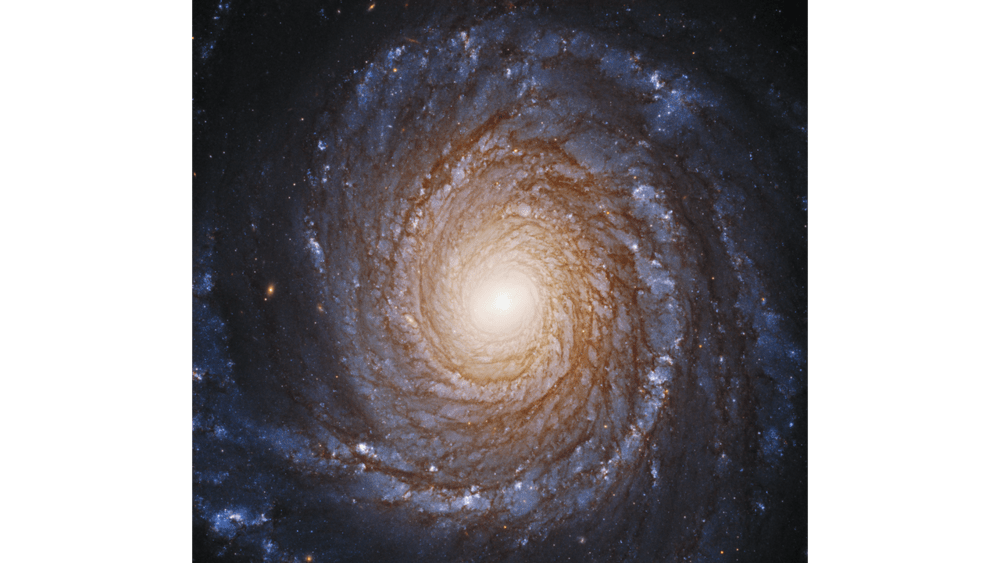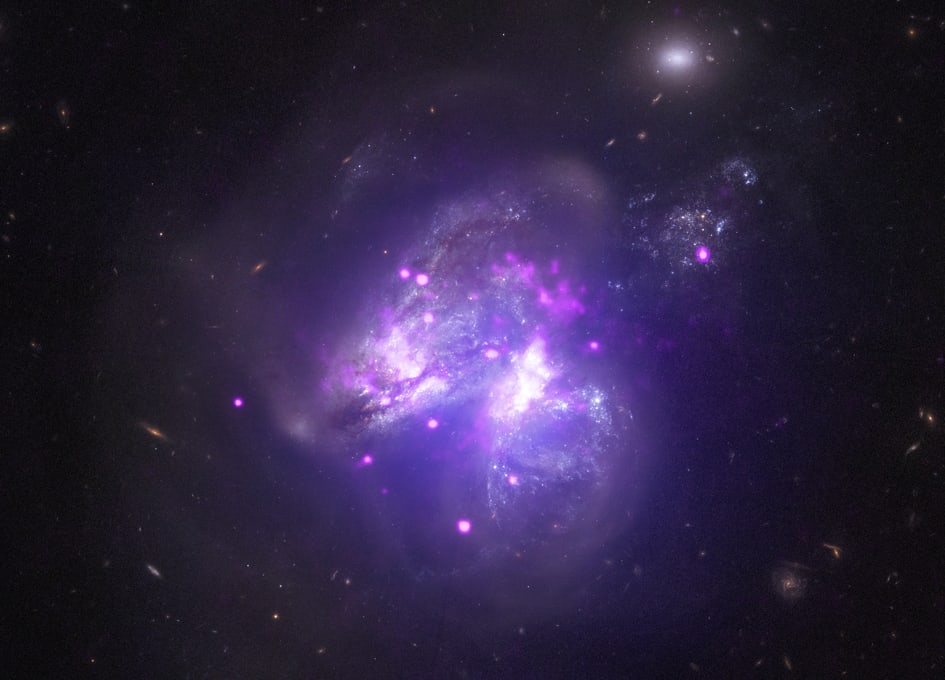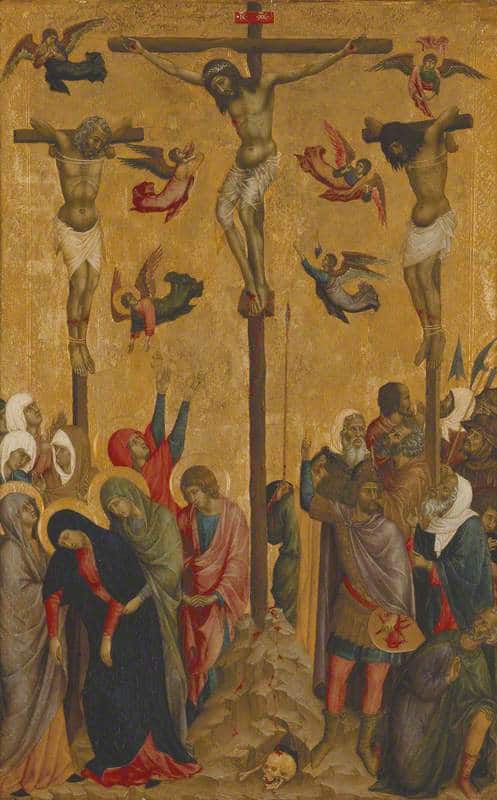Blog
While drifting through the cosmos, a magnificent interstellar dust cloud became sculpted by stellar winds and radiation to assume a recognizable shape. Fittingly named the Horsehead Nebula, it is embedded in the vast and complex Orion Nebula (M42). A potentially rewarding but difficult object to view personally with a small telescope, the above gorgeously detailed image was taken in 2013 in infrared light by the orbiting Hubble Space Telescope in honor of the 23rd anniversary of Hubble‘s launch. The dark molecular cloud, roughly 1,500 light years distant, is cataloged as Barnard 33 and is seen above primarily because it is backlit by the nearby massive star Sigma Orionis. The Horsehead Nebula will slowly shift its apparent shape over the next few million years and will eventually be destroyed by the high energy starlight.

Herbert Jeffrey Hancock (born April 12, 1940) is an American pianist, keyboardist, bandleader, composer and actor. Hancock started his career with Donald Byrd. He shortly thereafter joined the Miles Davis Quintet, where he helped to redefine the role of a jazz rhythm section and was one of the primary architects of the post-bop sound. In the 1970s, Hancock experimented with jazz fusion, funk, and electro styles.
Hancock’s best-known compositions include the jazz standards “Cantaloupe Island“, “Watermelon Man“, “Maiden Voyage“, and “Chameleon“, as well as the hit singles “I Thought It Was You” and “Rockit“. His 2007 tribute album River: The Joni Letters won the 2008 Grammy Award for Album of the Year, only the second jazz album to win the award, after Getz/Gilberto in 1965.
Hancock was born in Chicago, Illinois, the son of Winnie Belle (Griffin), a secretary, and Wayman Edward Hancock, a government meat inspector.His parents named him after the singer and actor Herb Jeffries. He attended Hyde Park High School. Like many jazz pianists, Hancock started with a classical music education. He studied from age seven, and his talent was recognized early. Considered a child prodigy, he played the first movement of Mozart‘s Piano Concerto No. 26 in D Major, K. 537 (Coronation) at a young people’s concert on February 5, 1952, with the Chicago Symphony Orchestra (led by CSO assistant conductor George Schick) at the age of 11.
more...Shakey Jake Harris (April 12, 1921 – March 2, 1990) was an American Chicago blues singer, harmonicist and songwriter. He released five albums over a period of almost 25 years. He was often musically associated with his nephew Magic Sam.
James D. Harris was born in Earle, Arkansas, and relocated with his family to Chicago, Illinois, at the age of seven. He played in several Chicago blues ensembles in the late 1940s. He also worked as a mechanic and as a professional gambler (his nickname came from a dice players’ expression, “shake ’em”). His debut recording was the single “Call Me if You Need Me”, backed with “Roll Your Moneymaker”, released by Artistic Records in 1958, featuring Magic Sam and Syl Johnson on guitar and produced by Willie Dixon. Harris was not paid for the session, but he won $700 shooting craps with label owner Eli Toscano.
In 1960, Bluesville Records teamed Harris with the jazz musicians Jack McDuff and Bill Jennings for the album Good Times. His later recording of Mouth Harp Blues returned to a more traditional blues style.[1] Harris toured and was part of the American Folk Blues Festival tour in 1962.
more...Theodore Roosevelt “Hound Dog” Taylor (April 12, 1915 – December 17, 1975) was an American Chicago blues guitarist and singer.
Taylor was born in Natchez, Mississippi, in 1915, though some sources say 1917. He initially played the piano and began playing the guitar when he was 20. He moved to Chicago in 1942.
He was famous among guitar players for having six fingers on both hands, a condition called polydactyly. As is usual with the condition, the extra digits were rudimentary nubbins and could not be moved. One night, while drunk, he cut off the extra digit on his right hand using a straight razor.
He became a full-time musician around 1957 but remained unknown outside the Chicago area, where he played small clubs in black neighborhoods and at the open-air Maxwell Street Market.He was known for his electrified slide guitar playing (roughly styled after that of Elmore James), his cheap Japanese Teisco guitars, and his raucous boogie beats.
In 1967, Taylor toured Europe with the American Folk Blues Festival, performing with Little Walter and Koko Taylor. After hearing Taylor with his band, the HouseRockers (Brewer Phillips on second guitar and Ted Harvey on drums) in 1970 at Florence’s Lounge on Chicago’s South Side, Bruce Iglauer (then a shipping clerk for Delmark Records) tried to persuade his employer to sign Taylor to a recording contract.
— Christgau’s Record Guide: Rock Albums of the Seventies (1981)
In 1971, having no success in getting Delmark to sign Taylor, Iglauer used a $2500 inheritance to form Alligator Records, which recorded Taylor’s debut album, Hound Dog Taylor and the HouseRockers. The album was recorded in just two nights. It was the first release for Alligator, which eventually became a major blues label.Iglauer began managing and booking the band, which toured nationwide and performed with Muddy Waters, Freddie King, and Big Mama Thornton.
https://www.youtube.com/watch?v=uHylp0HR9Hw
more...The graceful, winding arms of the majestic spiral galaxy NGC 3147 appear like a grand spiral staircase sweeping through space in this Hubble Space Telescope image. They are actually long lanes of young blue stars, pinkish nebulas, and dust in silhouette.
The beauty of the galaxy belies the fact that at its very center is a malnourished black hole surrounded by a thin, compact disk of stars, gas, and dust that have been caught up in a gravitational maelstrom. The black hole’s gravity is so intense that anything that ventures near it gets swept up in the disk.
The disk is so deeply embedded in the black hole’s intense gravitational field that the light from the gas disk is modified, according to Einstein’s theories of relativity, giving astronomers a unique peek at the dynamic processes close to a black hole.
NGC 3147 is located 130 million light-years away in the northern circumpolar constellation Draco the Dragon.

Richard Berry, Jr. (April 11, 1935 – January 23, 1997) was an American singer, songwriter and musician, who performed with many Los Angeles doo-wop and close harmony groups in the 1950s, including The Flairs and The Robins.
He is best known as the composer and original performer of the rock standard “Louie Louie“. The song became a hit for The Kingsmen, and it is one of the most recorded songs of all time; however, Berry received little financial benefit for writing it until the 1980s, having signed away his rights to the song in 1959. In the same year, he wrote and released “Have Love, Will Travel“, which has been played by many other artists.
Berry was born in Extension, south of Monroe, Louisiana, and moved with his family to Los Angeles as a baby. As a child, he suffered a hip injury and had to walk on crutches until he was six. His first instrument was the ukulele, which he learned when attending a summer camp for crippled children.
more...Luther Johnson (born April 11, 1939, Itta Bena, Mississippi) is a Chicago blues singer and guitarist, who performs under the name Luther “Guitar Junior” Johnson. He is not to be confused with Luther “Snake Boy” Johnson, Luther “Houserocker” Johnson, or Lonnie “Guitar Junior” Brooks.
Johnson moved to Chicago with his family in 1955. During the 1960s, he performed with Magic Sam. He performed in Muddy Waters‘ band from 1972 to 1980. In 1980, four of his songs were included in an anthology released by Alligator Records. That same year he appeared as a member of the Legendary Blues Band, backing John Lee Hooker in the movie The Blues Brothers.
Johnson moved to the East Coast and began fronting his own band, the Magic Rockers. His “Walkin’ the Dog” was recorded live at the Montreux Festival‘s Blues Night. He won a Grammy Award in 1985 for Best Traditional Blues Album for his part in Blues Explosion. He recorded three albums released by Telarc Records: Slammin’ on the West Side (1996), Got to Find a Way (1998), and Talkin’ About Soul (2001). He also performed on three albums by the Nighthawks.
He lived in Antrim, New Hampshire for many years but moved to Florida in 2017.
more...John Levy (April 11, 1912 – January 20, 2012) was an American jazz double-bassist and businessman. Levy was born in New Orleans, Louisiana. In 1944, he left his family home in Chicago, Illinois, and moved to New York City where he played bass for such renowned jazz musicians as Ben Webster, Erroll Garner, Milt Jackson, and Billie Holiday. In 1949, he became the bassist in the original George Shearing Quintet, where he also acted as Shearing’s road manager. In 1951, Levy opened John Levy Enterprises, Inc., becoming the first African-American personal manager in the pop or jazz music field. By the 1960s, Levy’s client roster included Shearing, Nancy Wilson, Cannonball Adderley, Joe Williams, Shirley Horn, Soul singer Jimmie Raye, and Ramsey Lewis.
In 1997, Levy was inducted into the International Jazz Hall of Fame, and in 2006 he was named a Jazz Master by the National Endowment for the Arts . He died, aged 99, in Altadena, California.
more...Arp 299 is a system located about 140 million light years from Earth. It contains two galaxies that are merging, creating a partially blended mix of stars from each galaxy in the process. However, this stellar mix is not the only ingredient. New data from Chandra reveals 25 bright X-ray sources sprinkled throughout the Arp 299 concoction. Fourteen of these sources are such strong emitters of X-rays that astronomers categorize them as “ultra-luminous X-ray sources,” or ULXs.
Arp 299 (parts of it are also known as IC 694 and NGC 3690) is a pair of colliding galaxies approximately 134 million light-years away in the constellation Ursa Major. Both of the galaxies involved in the collision are barred irregular galaxies. It is not completely clear which object is historically called IC 694. According to some sources, the small appendage more than an arcminute northwest of the main pair is actually IC 694, not the primary (eastern) companion.
The interaction of the two galaxies in Arp 299 produced young powerful starburst regions similar to those seen in II Zw 96. Eight supernovaehave been detected in Arp 299: SN 1992bu, SN 1993G, SN 1998T, SN 1999D were observed in NGC 3690 while SN 1990al, SN 2005U, SN2010O and SN2010P were observed in IC 694.

More Posts
- Cosmos VdB 4
- Alice Coltrane
- Lester Young
- World Music Davlat Nazar
- Daily Roots The Revolutionaries
- MLK March on Washington 60th Anniversary 8-26-23
- Cosmos DWB 111/119
- Branford Marsalis
- Leon Redbone
- SAVE UKRAINE DakhaBrakha
- Daily Roots Glen Brown & King Tubby
- Rhythm Roots Workshops “BONGO ZERO” performance at Ebenezer Tower
- Cosmos M104
- Leonard Bernstein
- Pat Martino
- Wayne Shorter
- World Drumming Babatunde Olatunji
- Flamenco Fridays Jośe Montoya Carpio y Juan Diego de Luis
- Daily Roots Horace Andy
- Cosmos NGC 6946


